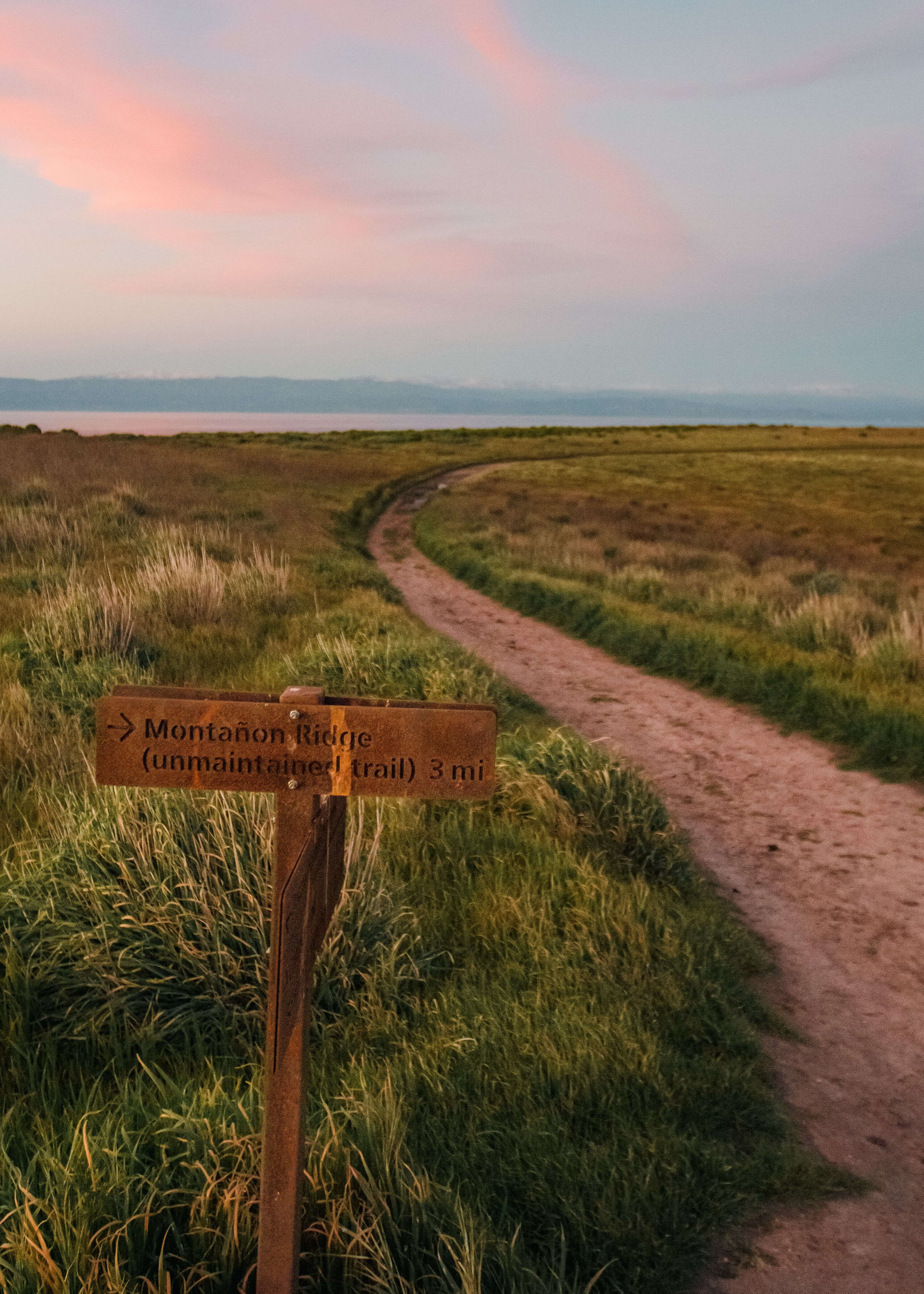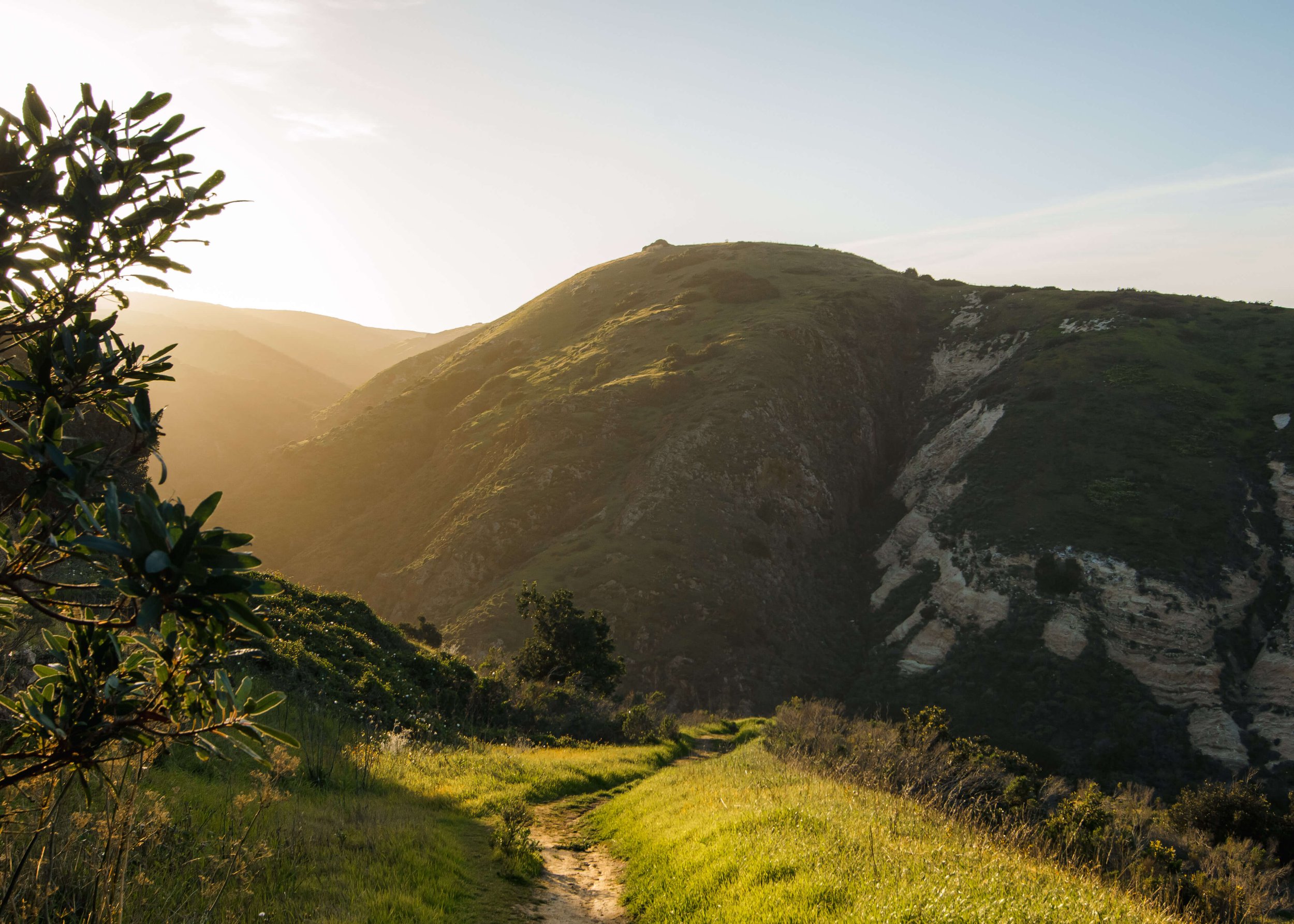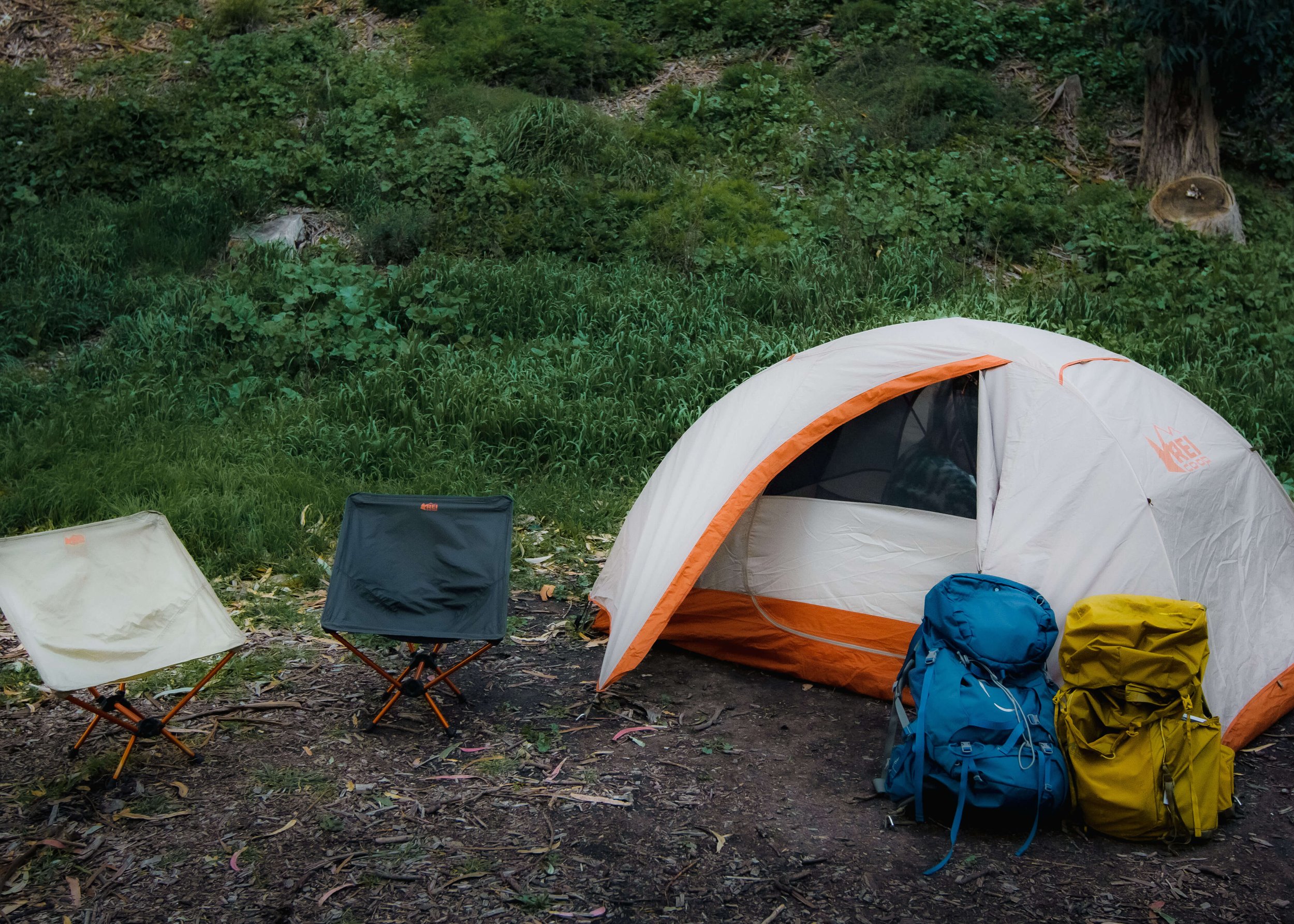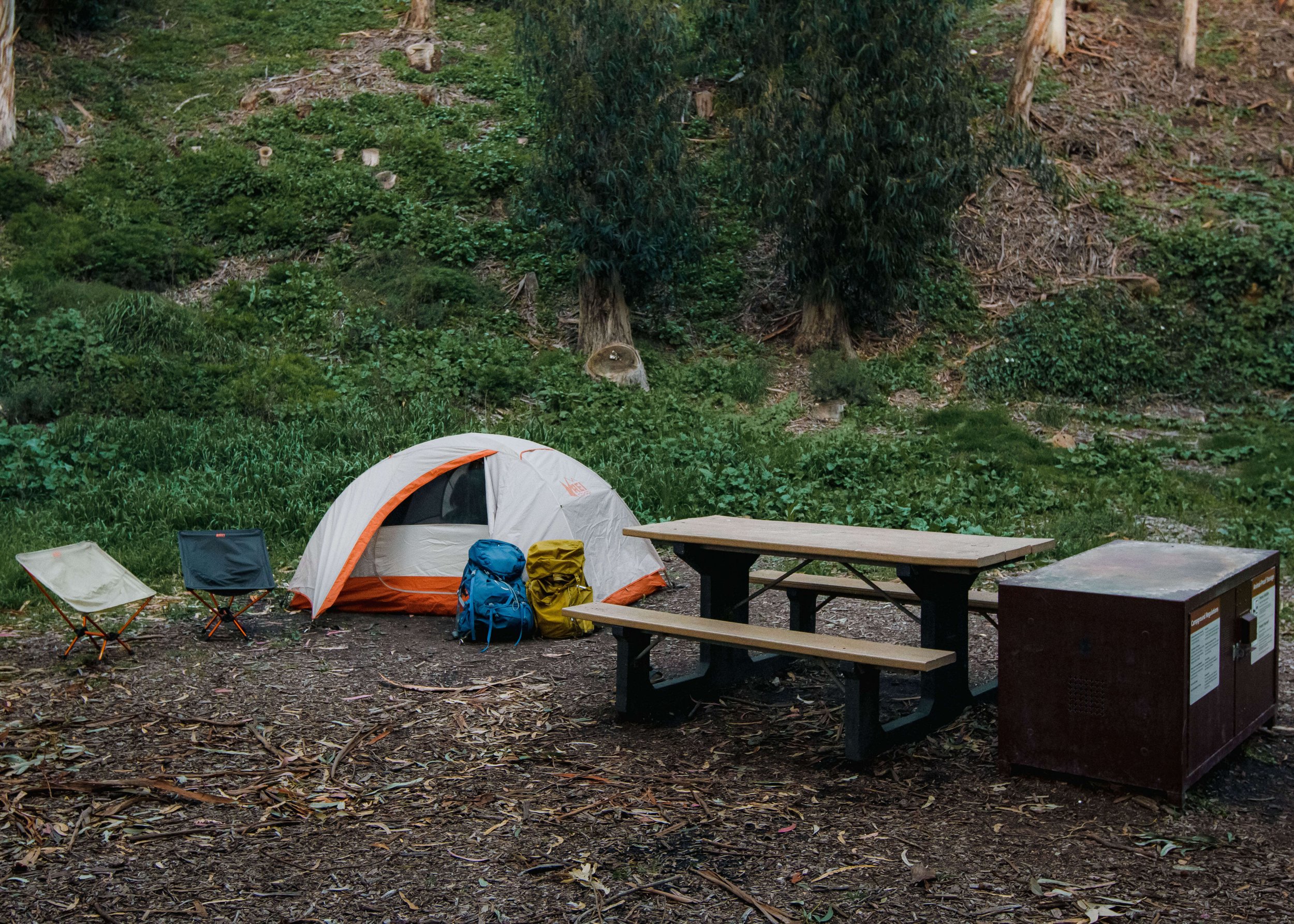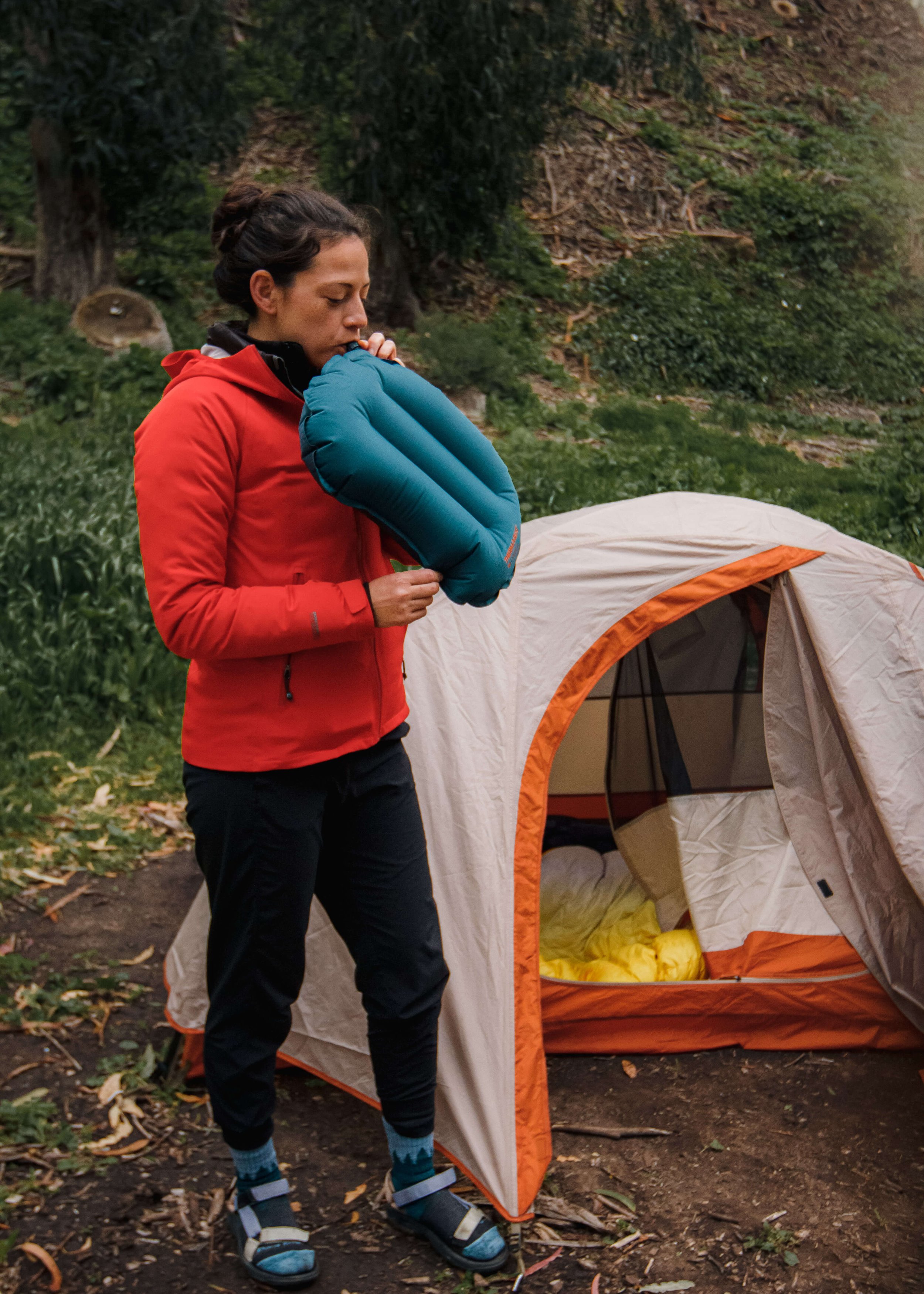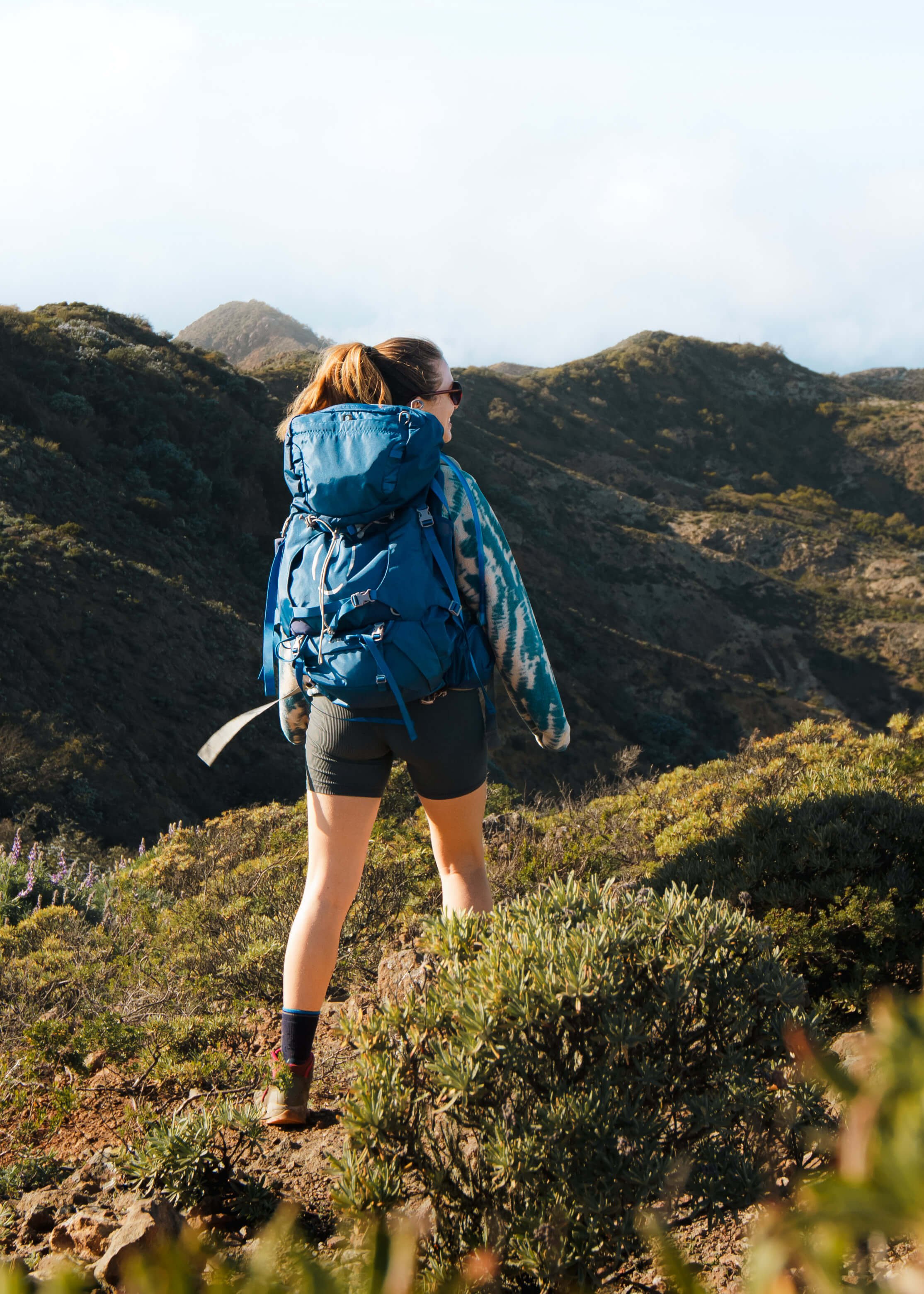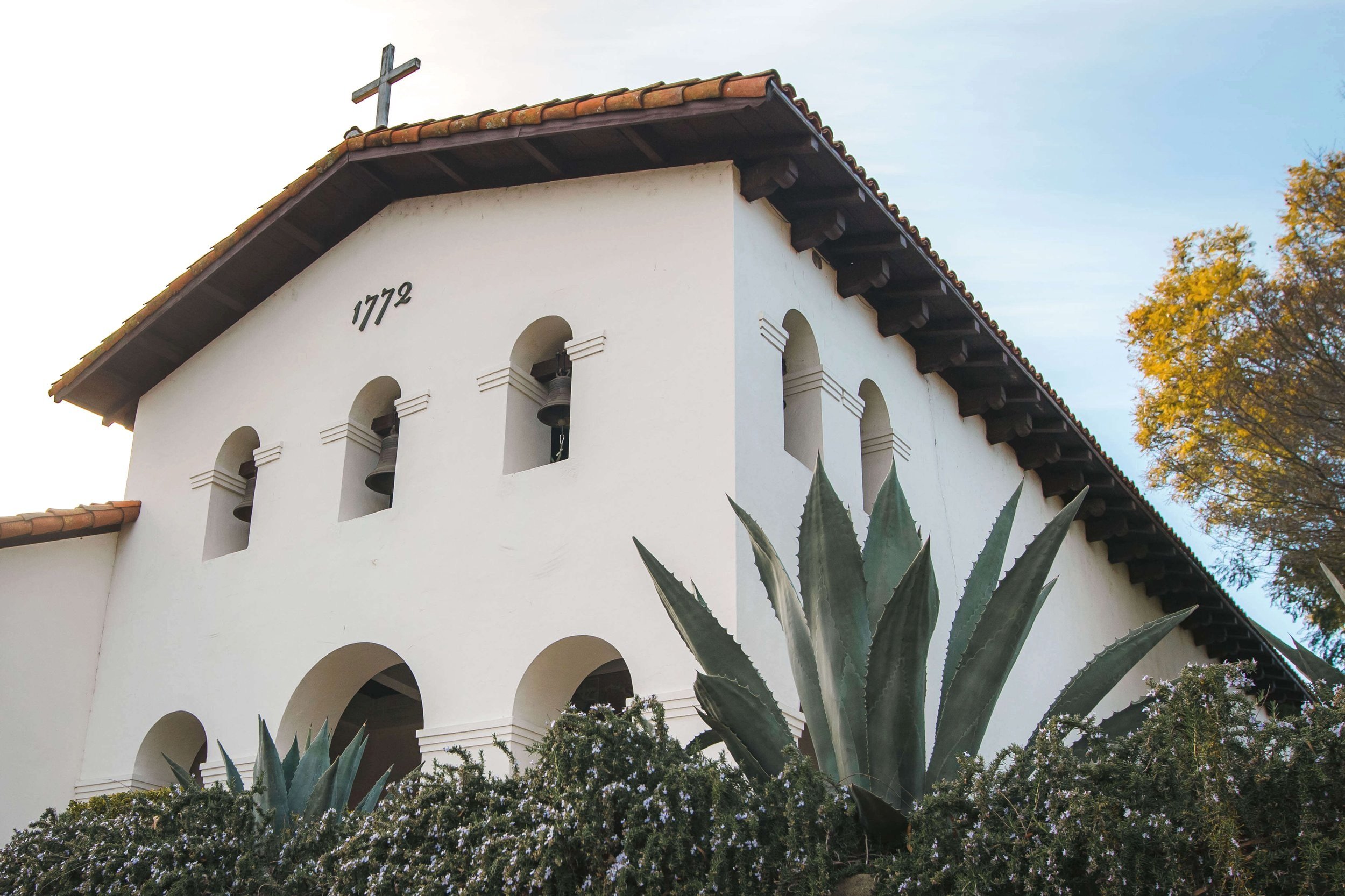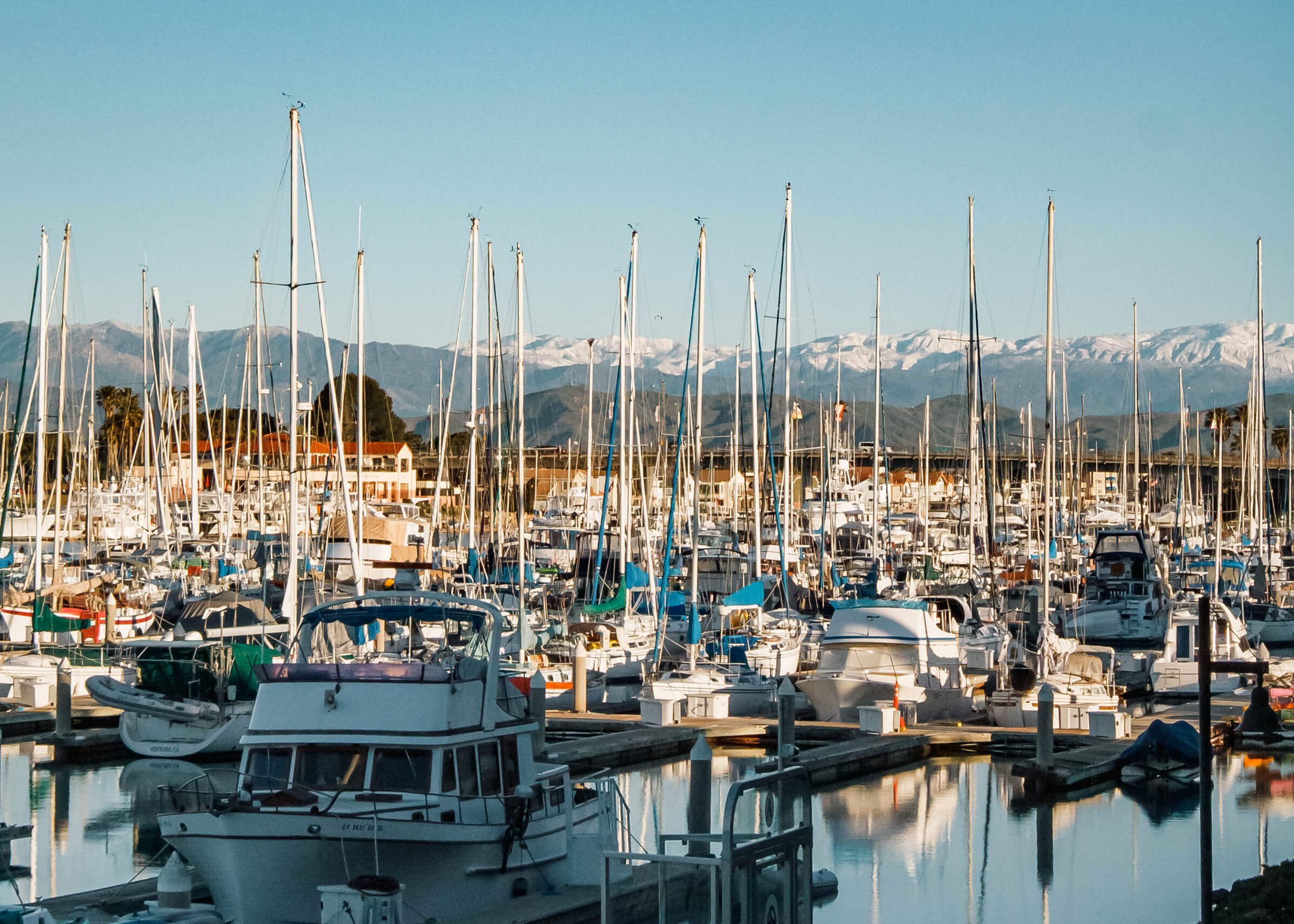Channel Islands National Park Travel Guide
Santa Cruz Island, part of Channel Islands national park, is a small but mighty escape. Discover hiking trails along picturesque plateaus and drink in the endless expanse of views.
This post was written in partnership with Visit California and Visit Oxnard. All opinions expressed are my own.
Santa Cruz Island, the largest of the five islands that make up Channel Islands National Park, is a mesmerizing combination of landscapes. The more I explored, the more I used points of comparison to comprehend what I was seeing; the plateau’s rocky edge dropped vertically into the ocean like Ireland’s Cliffs of Moher, and the plump grassy hills were akin to the lushness of Hawaii. The trails, with ocean on one side and gentle mountains rising from the other, felt like being transported to Basque Country in Spain. But these comparisons were unfair; this isn’t Ireland or Hawaii or Spain, it is a place all its own. It is the Channel Islands and it is spectacular.
Despite being off the coast of bustling Los Angeles, the Channel Islands ranks among the lesser visited national parks. It averages 320,000 visitors each year, a small slice of the national parks pie when compared to big hitters like Yosemite (3.6 million) and Arches (1.4 million). In this way, it has not yet succumbed to over-tourism—and let’s keep it that way, thank you very much. Here, you won’t need to compete for a parking spot, mostly because there are no parking lots to speak of. Nor will you find a place to buy a quick snack because those also don’t exist here. Aside from standing at the wee edge of the dock with your hand in the air, visitors aren’t privy to cell service either.
This sense of remoteness means that forethought is required to visit Santa Cruz Island. To reach its windswept shores, you must first book a boat ticket in advance. When packing for your stay, you must also bring all the food and water you’ll need. Due to its access via boat, you can expect to arrive at a certain time and leave at a certain time, and to get around the island you must walk. And it’s all worth it for the delightful experience it delivers.
If you are now chomping at the bit to visit the Channel Islands—and I very much recommend that you do—then this comprehensive travel guide is essential to planning your trip. In this post, you will learn what to expect, where to hike, and find helpful tips to make the most of your trip.
Table of contents
Snapshot
History
Itineraries
When to Visit
What to Expect
Travel Logistics
Hikes
Camping
Wildlife
Travel Tips
Other Sights Nearby
Location
Southern California, USA
Best for
Hiking, getting off-the-grid
When to Go
Year-round, best in late spring and early fall
Visitors / year
~ 320,000
Most of my guides include only a brief bit of history to provide context, but the Channel Islands turned out to be another beast entirely. Its varied cultural and historical past is fascinating—lone survivors, old human fossils, prisoners, a casual import of 24,000 sheep. So, throw a log on the fire and get cozy, because we’re taking a deep dive here.
History not your thing? Just want to plan your trip? Skip to the next section!
Let’s start at the beginning
Don’t worry, we’re not going that far back, just to the dawn of human history in North America. Why? Because, as it happens, the Channel Islands is home to the earliest evidence of humans on the North American continent. In 1959, fossils dating back 13,000 years were discovered on Santa Rosa Island. These fossils were of a man (known today by the highly Anglicized name of “Arlington Springs Man”) and remain the oldest evidence of humans in North America.
Then Came the Spanish
Fast forward 11,000 years and the Channel Islands has a lot of hubbub going, and most of it is not so great. In the 19th century, Spaniards sailed to the islands and set up camp, as 19th century Spaniards tended to do, and they relocated most of the native population to missionaries on California’s mainland. The northern islands, including Santa Cruz, had been home to the Chumash people, while the Tongva peoples primarily lived on the southern islands. With the islands devoid of people, the Spanish then used them for ranching and fishing ventures.
Next were the otter hunters
Around the same time, otters were widely hunted around the islands. This brought Spaniards and Russians (accompanied by Alaskan Aleuts), vying for their slice of the bounty. On San Nicolas, home to the Nicoleño people, relatives of the Tongva, the Russians had another agenda: massacring the native population. The Spaniards, ever so keen on seizing an opportunity, put on their savior hats and sailed to San Nicolas to bring the surviving Nicoleños to safety (read: to do forced labor in missionaries). Upon the Spanish’s arrival, the Nicoleño boarded a ship whose name dripped with irony, Peor es Nada (“Better Than Nothing”), and sailed toward supposed salvation. One young woman, however, did not make the boat. Left behind, she survived on the island alone for 18 years.
The story of this woman, given the name Juana Maria, gets a bit muddled—did she simply miss the boat? Or did she choose to stay? Was there a young child she stayed for? Or was that a dramatized story? History favors that she was left behind when she realized her young son had not been on the boat and she went to grab him. However, evidence for her choosing to stay of her own accord has emerged.
Whatever her motive, she survived nearly two decades in solitude, spending her days fishing, hunting, foraging, and sewing to survive. In 1853, she was discovered by sailors and agreed to return to the mainland—to a missionary—with them. No one there spoke her language (or so history says) so her story is left a mystery. What is certain is that she was resourceful, skilled and keen on singing. It is also fact that she died of a fall just seven weeks after arriving on California’s mainland. As a child, I read Scott O’Dell’s more romanticized version of this story in his 1960s children’s book, Island of the Blue Dolphins. (Cheesy name, excellent read.)
Then Mexico made an appearance
Back on Santa Cruz Island, the last of the Chumash were gone by 1822. They had lived on the island for 9,000 years. In that same year, Mexico gained independence from Spain and, with their newfound status, sought to expand their land—which included the Channel Islands. They employed an interesting strategy: sending a ship full of prisoners to Santa Cruz. This, if you were ever wondering, is why Prisoner’s Harbor is named as such.
And here we are today
When California became a state in 1850 the land was sold to a wealthy San Francisco businessman. When the Civil War rolled around wool became a hot commodity. Ever the capitalist, Mr. San Francisco Businessman then brought 24,000 sheep to Santa Cruz to do some casual wool spinning. In the 1880s, history repeats itself and the ranch is sold to a group of wealthy San Franciscan investors and ranching continued. This changing-of-ranch-hands cycle continued rolling well into the 1970s.
In the 1980s and 90s, the heirs of the island’s investors talked of selling. A small part of the eastern side of the island was sold to the National Park Service. One son, however, said “no, thank you" to selling to the government and instead forged a deal with The Nature Conservancy who received the remainder of Santa Cruz upon said man’s death. Today, The Nature Conservancy owns 76% of Santa Cruz Island and the National Park Service has the remaining 24%. And no, there are no sheep left, much to my dismay as well.
-
Start with the classic 5 mile loop hike to Cavern Point and onward to Potato Harbor. Start at Scorpion Canyon campground and hike clockwise back to the pier.
If you still have time, head up Smugglers Road to take in the fantastic scenery without the crowds. This can be an out-and-back hike so just mosey back to the pier in time to catch the boat.
-
On your first day, settle into camp then explore the Visitor Center and Scorpion Ranch. Later, hike up to Cavern Point and then to Potato Point for sunset.
For day two, check out the other side of the island by heading up Smugglers Road to Smuggler’s Cove beach. This can be hiked as an out-and-back or, if you’re feeling particularly adventurous, as a loop that includes climbing Montañon Ridge (note that it involves navigating an unmaintained trail).
-
Unless you are backpacking from Del Norte to Scorpion Canyon, three days is a lot to spend here.
If you’re not backpacking, you can do everything from the 2-day itinerary and add a little exploration of the eastern side of the island, such as to China Pines.
Low Season
Winter (November to February) sees fewer visitors. Temps are in the 40-50s F with windy days and cold nights. This is the best time for whale watching.
shoulder season
Spring (March to May) and early fall (September and October) sit in the 50-60s F. Temps are mild but the sun is usually out and it is a lovely time to see flora and fauna. In spring, you will find the landscape at its greenest. Early fall has warm water temps and great visibility.
high season
June to August brings the most crowds, including kids out of school. It is dry (vegetation may be a bit brown) and temps hover in the 70s F. It’s an ideal time for water activities.
Peace and quiet
Being an island unto itself has its perks: sweet, sweet silence. No cars, few people, all peace and quiet.
Cool weather temperatures
Don’t let the whole “SoCal” and “island” bits confuse you; Channel Islands aren’t as warm as one may think. Expect temperatures to hover in the 60s, going up a bit in summer and down in winter. When in doubt, pack an extra layer or two. You’ll probably want them.
It is not very Accessible
This park isn’t ideal for wheelchairs or walkers, nor is there much to offer those that have physical restrictions. It can be done, of course, but it will not be particularly comfortable. For starters, the boat ride there can be bumpy. Once you arrive, you won’t find any paved surfaces either. Instead, there is a mix of dirt and gravel paths. Most hikes require climbing uphill, however, there is a flat trail to the campgrounds. Other accessible areas include the beach near the pier, a little stroll through Scorpion Ranch featuring old relics from the 1800s and, while small, the visitor center is very informative.
Bring what you need
Recall that this is an island—and a tiny one at that. There are no stores to grab last-minute things you may have forgotten, including snacks and drinks. Whether visiting for the day or the weekend you must pack everything you need to be self-sufficient, including food and water.
Spectacular views
Santa Cruz Island is incredibly picturesque. For the most part, hiking trails are on a plateau that affords 360 degree views of the ocean and across the island. Trails also dip into canyons and meander up peaks.
GETTING THERE
A 1-2 hour boat ride (the length depends on wildlife sightings and waves) departs from Ventura and Oxnard. All water, portable chargers and fuel must be removed from your pack prior to boarding.
Tickets can be purchased through Island Packers ($84 per adult, roundtrip).
GETTING AROUND
Walking. That’s it, that’s the way.
WHERE TO STAY
You get one option if overnighting: good ol’ fashioned tent camping. The main campground is Scorpion Canyon which has pit toilets and potable water. If backpacking, you may also stay at Del Norte campground. Reservations are required.
There are several hiking trails on Santa Cruz Island that cater to different physical abilities and interests. Most of the trails are connected so they can be out-and-back hikes or made into loops of varying mileage. In fact, you could do all of these hikes in one long, single loop if you really wanted to. The recommended hikes below cover the eastern side of Santa Cruz Island near Scorpion Beach. There are other hikes on the Prisoners Harbor side as well, though they are primarily backpacking trails.
Cavern Point | 2 miles Roundtrip (RT)
Probably the most popular hike due to its location near the pier, short mileage and epic coastal views. For a gentler climb, make it a loop by starting at Scorpion Canyon campground and hiking it clockwise. You can also do an out-and-back from Scorpion Anchorage (the pier) and go straight up. To make it a longer loop, continue to Potato Harbor.
Potato Harbor | 5 miles rt
This is a bit farther than Cavern Point and less busy (though Channel Islands is rarely “busy”). The views are similar to Cavern Point but Potato Harbor has more up close perspectives of the cliffs and harbors. I highly recommend this one, especially for sunset.
Smuggler’s Cove | 7.5 miles RT
This hike climbs up from Scorpion Anchorage and continues along a plateau that offers expanse views of the island. It eventually leads down to a rocky beach that makes a good lunch spot. You can turn back or continue along an unmaintained trail to Montañon Ridge. This was one of my favorite hikes!
Montañon Ridge Loop | 12 miles
This is an unmaintained trail so you should be a confident hiker if attempting it. We hiked clockwise from Smuggler’s Cove though you can also do it counter-clockwise from the campgrounds or from Potato Harbor. Clockwise will have many false summits (about four of them), so making it to the top of Montañon Ridge feels like much more work than its 1800 foot elevation would suggest. Counter-clockwise is a bit gentler elevation-wise.
To view the full list of available hikes, visit the National Park Service.
If you plan to overnight on Santa Cruz Island your only option is to tent camp. The main campground, Scorpion Canyon, is where most visitors stay and is $15/night. The other option is Del Norte Backcountry which is used by those backpacking the island and is less accessible. Both campgrounds must be reserved in advance.
Scorpion Canyon
The main campground, Scorpion Canyon, is easily accessed from the pier and is flanked by tall eucalyptus trees. Keep in mind that it is primitive camping—but kicked up a notch. You will find no sewage or electricity round these parts but there is potable water and pit toilet. Each campsite also has its own picnic table and food storage locker to keep those shameless foxes at bay. Campers must carry in all their gear (or roll it, as we saw a few suitcases make an appearance) and everything (including trash!) must be packed out.
Lower campground
22 campsites are located a flat 0.5 mile walk from the pier. There are a variety of sunny and shady sites and each allows up to 6 people in a maximum of 3 tents.
Upper campground
6 group sites for a minimum of 13 people (maximum 15 people) per site are located a flat one mile walk from the pier.
Reserve your campsite on Recreation.gov
Del Norte Backcountry
Backpackers have the option of staying at Del Norte. Located 3.5 miles from Prisoner’s Harbor, it is primitive backcountry camping with no water or facilities available. There are only four sites to choose from; #1 and #2 offer the best views and no shade, #3 and #4 offer shade but less impressive views.
Reserve your campsite on Recreation.gov
“Is that a cat!?” I yelled. I had turned my back for only a few seconds to set something on the picnic table and when I turned around to our tent I found a small creature making themselves comfortable on our sleeping bags. We quickly discovered that the foxes of Channel Islands are brazen little fellows. Keep your food storage bin open for, I kid you not, four seconds, and you will have a fox in it. Same goes for your tent, as we learned. What other animals can you expect to see? It runs the gamut—birds, whales, mammals, amphibians, and rodents. Below are a few common sightings.
Whales
Wales are best seen from December to March when they are migrating. You may spot gray whales, humpbacks, and, if you’re lucky, blue whales.
Dolphins
Pods of Risso and bottlenose dolphins are most often spotted on the boat ride to and from the island.
Island Fox
Sure to be seen are the miniature-sized foxes that are endemic to the Channel Islands. They are cute but sneaky!
Lizards
Small lizards can be spied sunbathing on rocks along the island’s trails. They scurry away pretty quick, as lizards tend to do.
Ravens
The ravens, of which there are plenty, are very smart and can unzip things. They are found all over the island and are huge.
Other birds
Santa Cruz Island is a good place for birding. Land birds include scrub jays, warblers, finches, hummingbirds, eagles, larks, and much more. Shore birds are ever present as well, like cormorants and petrels. (The NPS has a list of birds to see, and it’s a long one.)
Traveling to Santa Cruz Island is well worth the trek. To make the most of your trip, keep a few of these tips in mind:
There are no stores on Santa Cruz Island, so bring everything you need for your stay.
For camping, potable water is available at Scorpion Canyon Campground.
The boat ride can be choppy. Consider popping some Dramamine when traveling to and from the island.
The boat company, Island Packers, requires that fuel, water and portable chargers not be packed in your backpack. Keep those separate when packing! Everyone’s fuel will go in a box, you hang on to your water and chargers.
While national parks require entrance fees, no pass is required to visit Santa Cruz Island. You can leave your America the Beautiful at home for this one.
OXNard
Channel Islands National Park can be accessed via Oxnard, a cute small city with a delicious Taco Trail, excellent restaurants, a welcoming community vibe and coastal views galore.
Ventura
Channel Islands can also be accessed by boat from Ventura Harbor. Similar to Oxnard, this is a coastal beach city.



